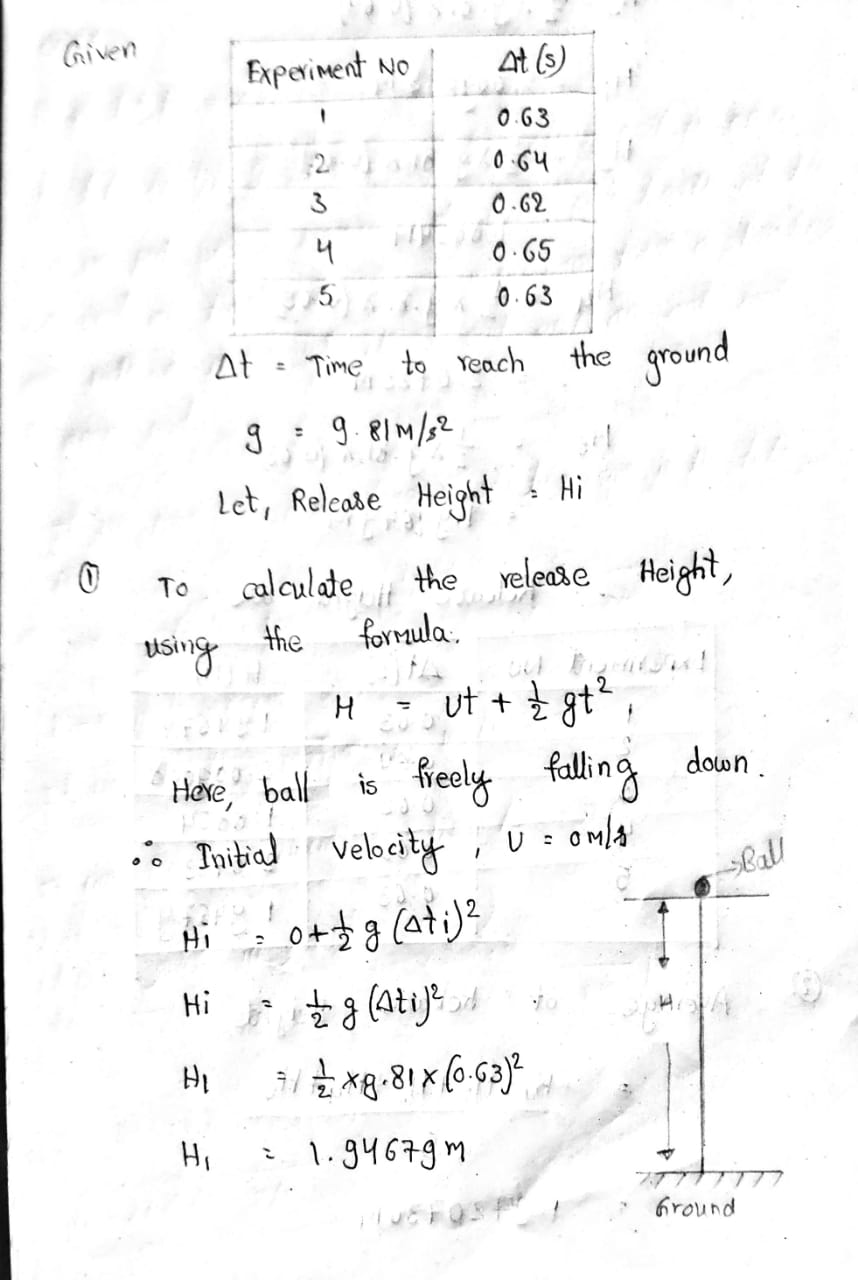In this experiment, a tennis ball is released from a certain height. While the ball falls down, time of release (t;) and time when the ball touches the ground (tr) are recorded using a stopwatch and slow motion video. The difference At = tr-ti is the time interval during the fall. For the first experiment (available with video), t=17.31s and tr= 17.94s, yielding At = 17.94s - 17.31s = 0.63s. At values are listed below for 5 different repeats of the experiment using the same height. Experiment No At (s) 0.63s 2 0.64s 3 0.62s 4 0.65s 5 0.63s ANALYSIS: 1. Calculate the release height (initial height) of the ball for each of the five experiments. (Show calculation. Include the formula, units used in your calculation)
Displacement, Velocity and Acceleration
In classical mechanics, kinematics deals with the motion of a particle. It deals only with the position, velocity, acceleration, and displacement of a particle. It has no concern about the source of motion.
Linear Displacement
The term "displacement" refers to when something shifts away from its original "location," and "linear" refers to a straight line. As a result, “Linear Displacement” can be described as the movement of an object in a straight line along a single axis, for example, from side to side or up and down. Non-contact sensors such as LVDTs and other linear location sensors can calculate linear displacement. Non-contact sensors such as LVDTs and other linear location sensors can calculate linear displacement. Linear displacement is usually measured in millimeters or inches and may be positive or negative.


Trending now
This is a popular solution!
Step by step
Solved in 3 steps with 3 images

How do you find the value of acceleration due to gravity? Is it always 9.81 m/s^2?








